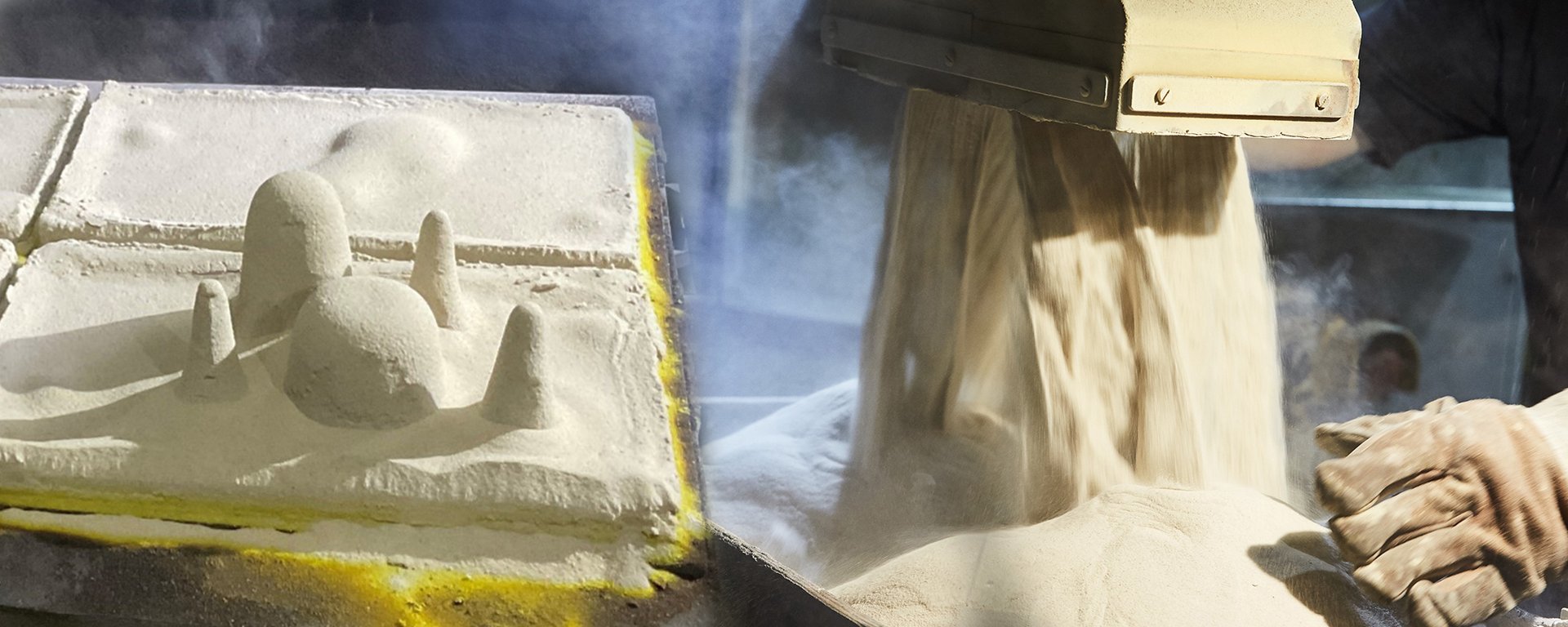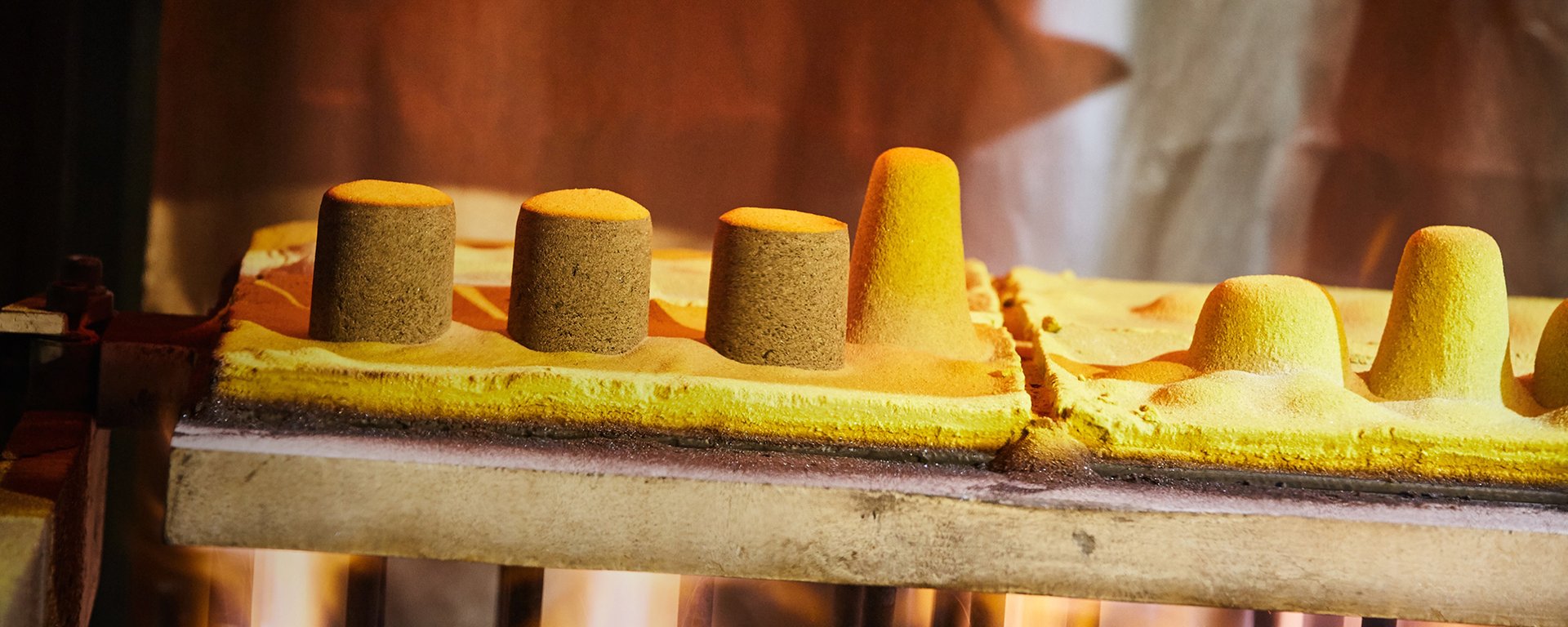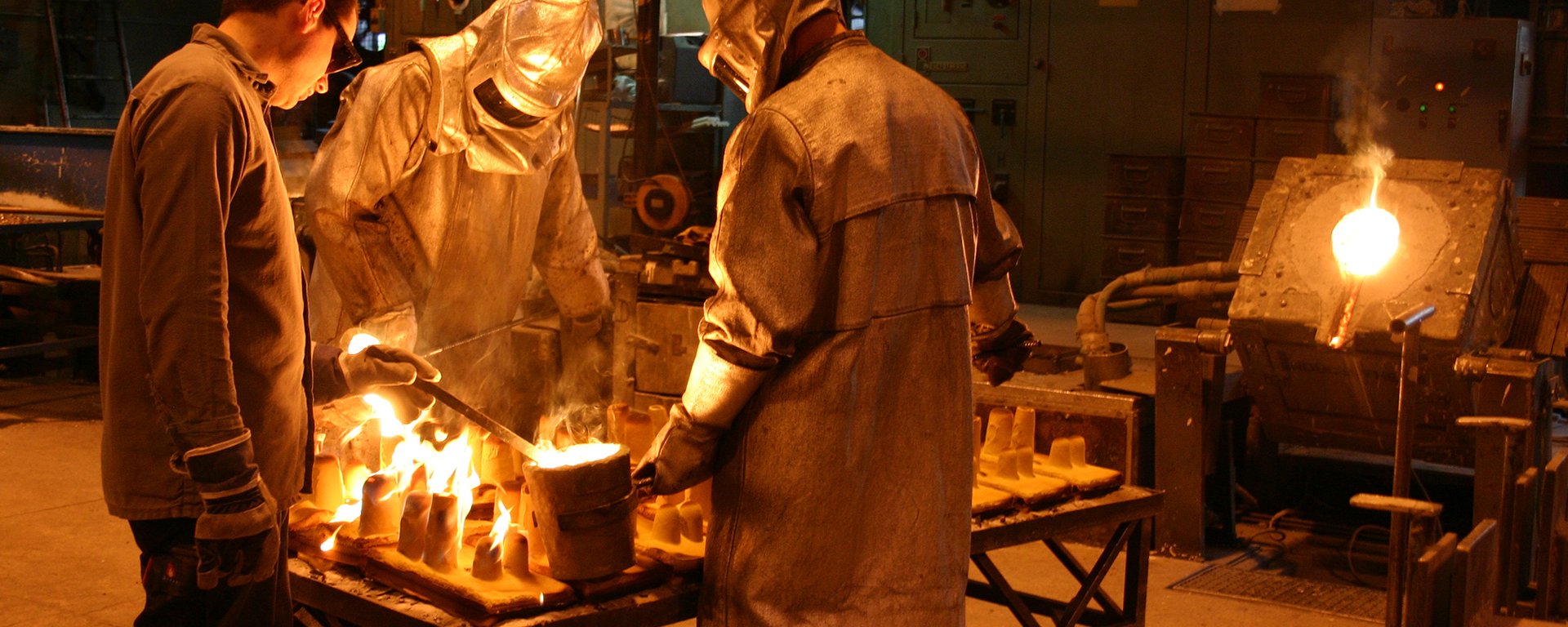Experience Croning - A Journey through resin shell casting
Resin shell Casting - also known as Croning after its inventor Johannes Croning - allows castings of small to medium casting volumes to be produced with the best surface quality. Low to high quantities can be produced cost-effectively and to a high quality using the mask molding process.
The process is characterized by very good final contour accuracy and is therefore one of the precision casting processes. The starting point is a steel model of the desired component, around which a mask of resin-coated molding sand is created. This mask serves as a mold for casting the component and is destroyed during the casting process. Let's take a look at the process step by step!
The process of resin shell casting:
1. Simulation

Casting simulation is an elementary step of casting design. Based on the simulation of mould filling and cooling behaviour, hotspots and defects can be predicted and the arrangement of the parts in the moulds as well as the dimensions and positioning of feeders can be optimized. The aim is always to achieve high output and the best possible casting quality.
2. Model making

The models are mounted on a heatable carrier plate in the best arrangement determined by simulation. Sprue, flow channels, feeders and placeholders for filters are installed.
3. Sanding

The finished model is now heated to the curing temperature of the resin and the molding sand mixture is applied to the framed and tempered model. The very free-flowing sand ensures that the model is accurately contoured in the mold. When the excess, uncured sand is removed, the mold remains as a shell of hardened sand-resin mixture.
4. Curing of the mold

The mold is then fully cured to ensure the required stability for the casting process.
5. Completion of the form

Cores are now fitted when the mold is completed to represent cavities in the later cast parts. To avoid casting defects due to slag or impurities in the molten metal, a filter is used to retain these. Each mold consists of an upper and a lower shell, which are glued together to complete the mold.
6. Casting

The molten metal is then poured into the mold by hand. The feeders positioned above the actual parts ensure that the mold cavities are completely filled during solidification.
7. Fettling and quality control

Inlets and risers are removed during the post-processing of the cast parts. Depending on the alloy, these remnants and all chips produced during machining can be 100% recycled. Finally, the castings are deburred and ground. Finally, they are inspected for defects.
Typical applications for shell mouded castings
The shell molding process is an economical process for the production of medium to large quantities of geometrically simple castings. This process generally achieves a finer microstructure and higher degrees of hardness than conventional sand casting, which can be advantageous for cutting tools and knives, for example.
Important selection criteria for suitability for resin shell casting are
- Low to high quantities
- Relatively simple geometries
- Relatively fine casting structure required
- Higher hardness required
Thank you for following our technology insights!
Do you have any questions or would you like more information? Feel free to contact our experts via wearsolutions@deloro.com

